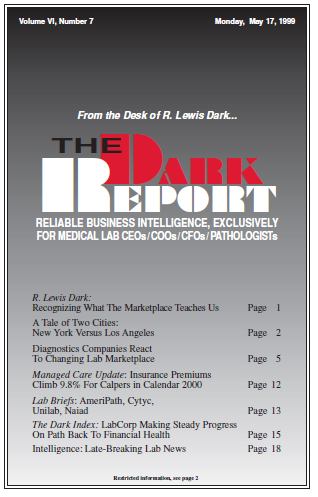MOST OF THE LAB INDUSTRY is watching the impending acquisition by Quest Diagnostics Incorporated of SmithKline Beecham Clinical Laboratories (SBCL). This big news overshadows the steady gains made at Laboratory Corporation of America in its efforts to return to financial stability. After several years of financial struggle, the company is showing improved financial performance for […]
To access this post, you must purchase The Dark Report.


